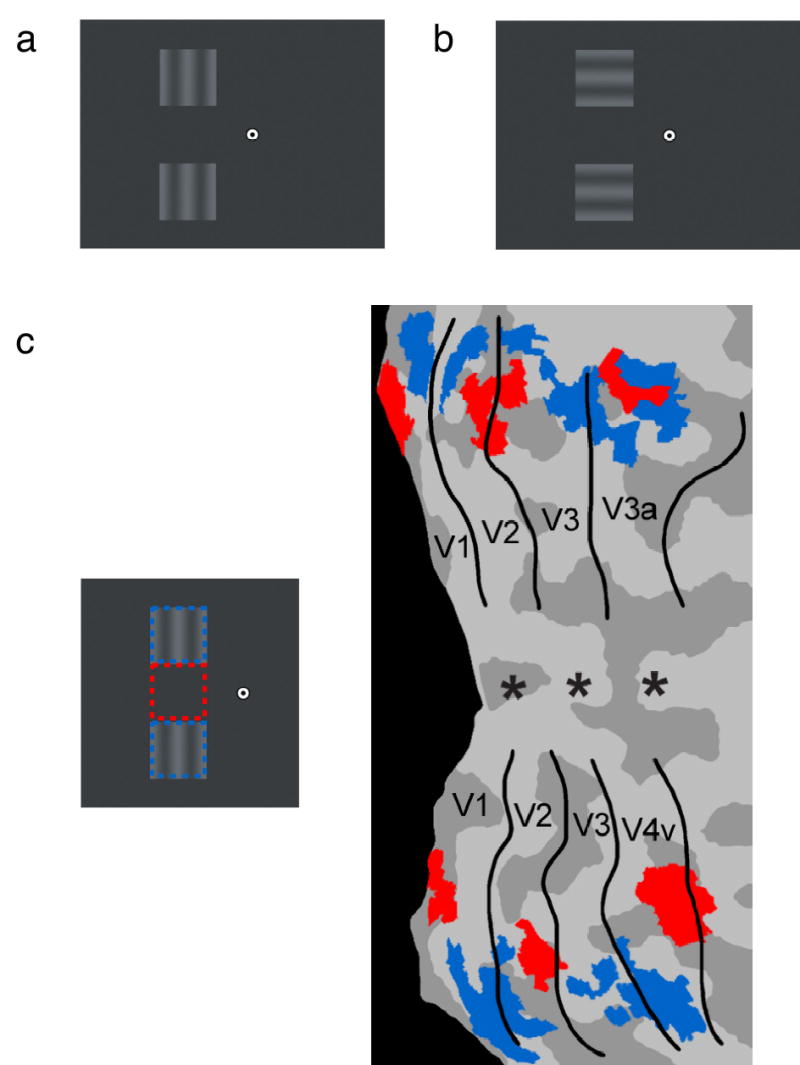Figure 1.

Experimental design and stimuli. Subjects viewed letters at central fixation and oscillating sine-wave gratings in the upper and lower left visual field, separated by a 7° gap. Subjects attended to the identity of the letters or to brief decrements in the contrast of the peripheral gratings. (a) Phantom condition: Vertically aligned gratings led to strong impressions of a phantom grating extending through the blank gap region. A weaker impression of a phantom may be observed here with static gratings. (b) Control condition: Horizontal gratings appeared to move as a perceptual group but failed to lead to an impression of a phantom. (c) Retinotopic regions of interest in areas V1–V4 corresponding to the location of the blank gap (red) and surrounding gratings (blue), shown on the cortical flatmap of a representative subject. Regions were identified in separate scans using flickering checkerboards, and aligned to retinotopic maps collected from the same subject.
